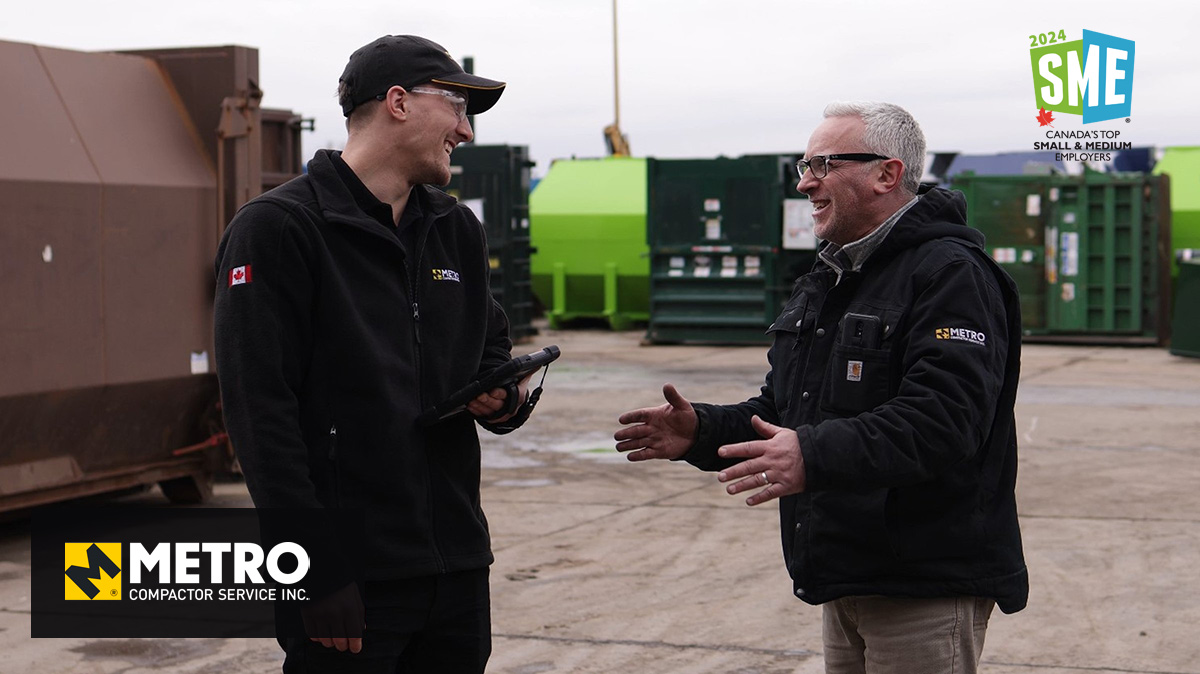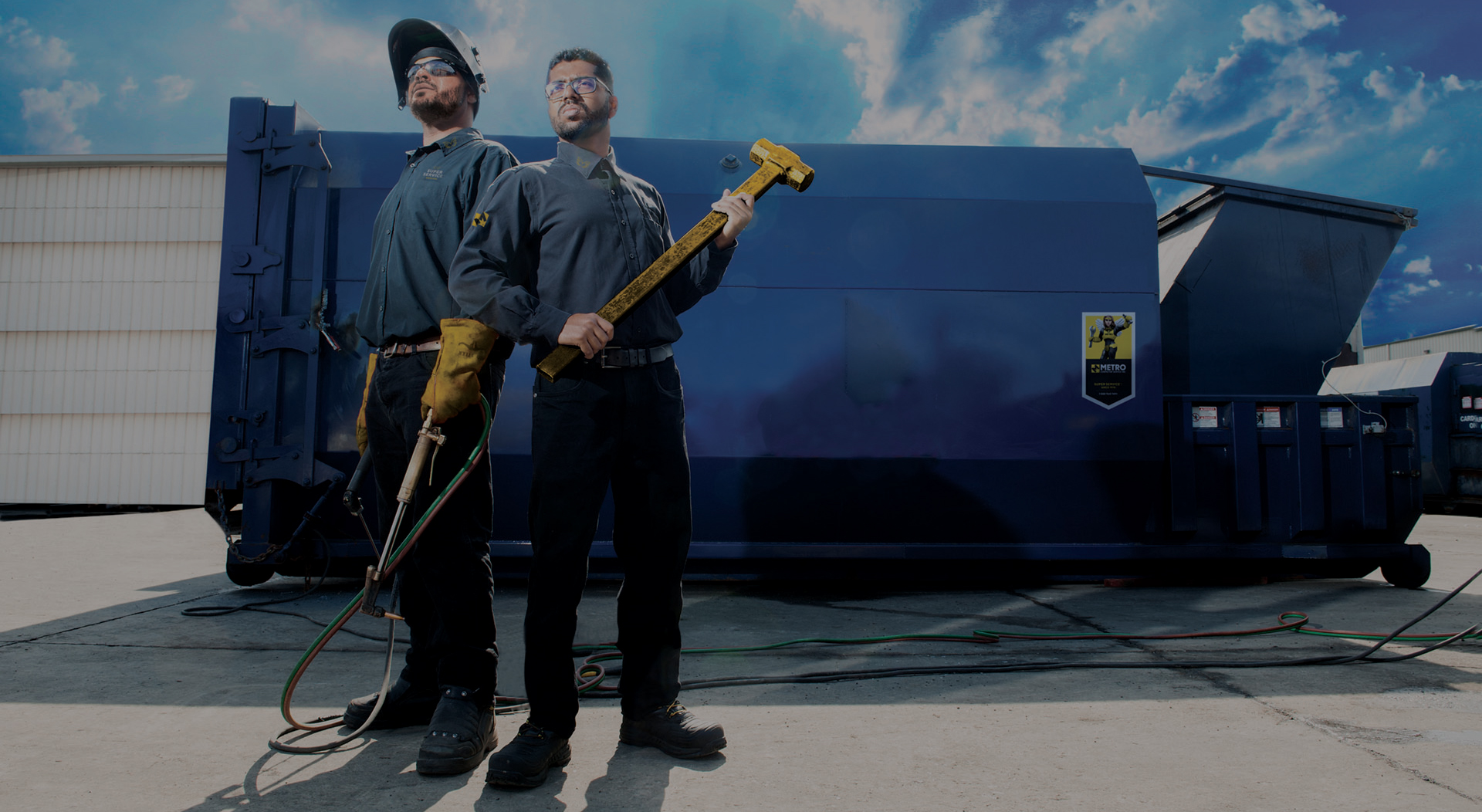Cardboard Baler Rental Solutions for Streamlined Recycling
Cardboard Baler Rental Solutions for Streamlined Recycling
Blog Article
Exploring the Necessary Duty of Waste Tools in Modern Recycling Processes and Sustainable Waste Disposal Practices
The vital function of waste equipment in modern-day reusing procedures underscores its value in attaining sustainable waste disposal techniques. Advanced systems, such as automated arranging technologies and compactors, not only boost performance however likewise play a pivotal duty in decreasing contamination prices and boosting material healing. As the need for even more lasting remedies expands, it is necessary to check out exactly how these modern technologies adjust to developing difficulties within waste monitoring. What innovative developments are on the horizon that could additionally transform these processes?
Relevance of Waste Devices
Why is waste tools essential in the reusing procedure? By helping with the splitting up of products, waste devices lessens contamination, which is critical in ensuring high-grade recyclables that can be reestablished right into producing cycles.
Moreover, waste tools enhances functional efficiency and security within reusing centers. Advanced equipment, such as shredders and balers, permits the rapid processing of big quantities of waste, lowering labor costs and processing time. In addition, making use of customized devices lowers the danger of injury amongst employees by automating unsafe jobs.
Additionally, the ecological effect of recycling is intensified by reliable waste tools. By maximizing the reusing process, centers can substantially decrease the quantity of waste sent out to land fills, therefore adding to sustainability initiatives. Finally, waste tools is not simply a supplementary element of recycling; it is a fundamental element that drives performance, safety and security, and ecological stewardship in modern waste management practices.
Types of Waste Equipment
The performance of recycling procedures is closely connected to the certain sorts of waste equipment made use of while doing so. baler rental. Various classifications of equipment are essential to the collection, arranging, processing, and transport of recyclable products
To start with, collection devices, such as waste collection vehicles and containers, is vital for gathering recyclables from numerous resources, including property, commercial, and commercial places. As soon as collected, sorting tools, consisting of conveyor belts, shredders, and magnetic separators, plays a critical role in distinguishing different material types, guaranteeing that pollutants are gotten rid of prior to processing.
Processing equipment, such as balers and compactors, even more prepares products for reusing by pressing and packaging them right into manageable sizes. This not only optimizes space but additionally enhances transport effectiveness. Furthermore, specialized machinery like granulators and extruders is made use of for changing products into reusable forms, specifically in plastic recycling.

Function in Recycling Procedures
In recycling processes, the duty of waste tools is crucial in making sure effectiveness and effectiveness at every stage. This devices encompasses a series of equipment designed to deal with, process, and sort products that are to be recycled. The first phase involves collection and transport, where compactors and balers play an essential function in optimizing the quantity of materials for transportation, therefore reducing functional expenses.
Once at the reusing center, shredders and crushers come into play, breaking down products into workable sizes suitable for more processing. These machines contribute to enhancing the surface of recyclables, facilitating more efficient material healing. Arranging systems, outfitted with innovative modern technologies such as conveyor belts and optical sensors, make certain that materials are accurately separated by type, consequently making the most of the top quality of the recycled final result.
Additionally, specific equipment for handling certain materials-- such as glass, plastics, and steels-- ensures that each type is handled in one of the most efficient fashion. On the whole, the assimilation of innovative waste equipment into the reusing procedure not just enhances procedures but also dramatically adds to the overall recovery rates of valuable products, underscoring its crucial function in contemporary recycling initiatives.
Influence on Lasting Practices
With the reliable procedure of waste tools, recycling procedures substantially enhance sustainable practices throughout various industries. This impact is recognized through increased product recovery rates, which minimize the demand for virgin sources. By enhancing sorting and view publisher site processing features, advanced waste tools reduces contamination in recyclable products, consequently improving the top quality of recycled result. The decrease of waste sent out to landfills is an additional vital advantage, as it lessens ecological deterioration and reduces greenhouse gas emissions related to decay.

Moreover, the combination of wise technologies in waste monitoring systems enables real-time information tracking and evaluation, bring about even more informed decision-making and operational effectiveness. As markets increasingly prioritize sustainability, the duty of waste devices ends up being vital fit methods that align with ecological stewardship and regulatory conformity. Eventually, the synergy between waste tools and reusing processes plays a vital duty ahead of time wider sustainability objectives throughout neighborhoods and sectors alike.
Future Patterns in Waste Management
Arising fads in waste monitoring are poised to improve the landscape of recycling and source recuperation considerably. Among one of the most crucial shifts is the integration of advanced technologies such as artificial intelligence, artificial intelligence, and the Web of Points (IoT) These developments promote enhanced sorting procedures, enhancing the efficiency and accuracy of recycling operations. Smart waste containers furnished with sensing units can keep track of waste degrees in real-time, optimizing collection routes and decreasing functional prices.
In addition, the circular economy design is gaining grip, promoting the idea of reusing products instead of getting rid of them. This fad encourages companies to develop products with end-of-life factors to consider in mind, driving the demand for ingenious waste administration options.
Moreover, public awareness and involvement in sustainability methods get on the increase, leading to raised involvement in recycling programs. Government plans navigate to this website are also developing, with stricter regulations on waste disposal and motivations for sustainable practices.
As these patterns converge, they produce a much more effective, sustainable waste monitoring system that not only reduces environmental influence however also cultivates economic growth with source healing and development in waste tools. The future of waste monitoring looks promising, driven by technology and a commitment to sustainability.
Final Thought
Finally, waste equipment plays a pivotal function in boosting the performance and performance of contemporary recycling processes. By reducing contamination and making the most of material recovery, advanced equipment sustains lasting garbage disposal practices and cultivates a round economy. The consolidation of wise innovations further optimizes these efforts, making sure liable ecological stewardship. As waste monitoring remains to advance, the importance of ingenious waste devices will remain vital in attaining sustainability objectives and addressing the challenges of about his source depletion.
Report this page